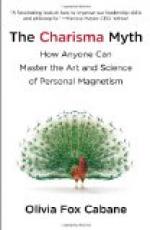[6] See, with respect to the primitive unity of the Aryan and Semitic races, the works of the great philologist, T.G. Ascoli, and others.
[7] “Although it (psychology), still makes some show, yet the old psychology is condemned. Its conditions of existence have disappeared in its new environment. Its methods no longer suffice for the increasing difficulties of the task and the larger requirements of the scientific spirit. It is constrained to live upon its past. Its wisest representatives have vainly attempted a compromise, loudly asserting that facts must be observed, and that a large part should be assigned to experience. Their concessions are unavailing, for however sincerely meant, they are not actually carried out. As soon as they set to work the taste for pure speculation again possesses them. Moreover, no reform of what is radically false can be effectual, and ancient psychology is a bastard conception, doomed to perish from the contradictions which it involves.”—Ribot, Psychologie Allemande Contemporaine. Paris, 1879.
[8] Della legge fondamentale della intelligenza nel regno animale. Milano. Dumolard, 1877.
[9] See, among other works on the subject, Die Herabkunft des Feuers und des Gottertranks, by Adalbert Kuhn; and Croyances et Legendes de l’Antiquite, by A. Maury.
[10] See Wuttke, Deutscher Volksaberglauber; Tylor, Primitive Culture; Hanusch, Rochholz, and others.
[11] The Worship of Animals and Plants, Part I. Fortnightly Review, 1869. The same argument is generally used; see Tylor, Early History of Mankind, 1865; Lubbock, Origin of Civilization, 1870; Herbert Spencer, Fortnightly Review, May, 1870; Waitz, Anthropologie der Naturvoelker; Bastian, Mensch in der Geschichte.
[12] See Alger’s Critical History of the Doctrine of a Future Life.
[13] Arbrousset, The Basutos.
[14] Muir, Sanscrit Texts.
[15] Burton, West Africa; Tylor, Primitive Culture.
[16] Pictet, Origines Indo-Eoropeennes.
[17] The Hawaians, for example, have only one term for love, friendship, esteem, gratitude, benevolence, etc.—aloha; while they have distinct words for different degrees in a single natural phenomenon. Thus aneane, gentle breeze; matani, wind; pahi, the act of breathing through the mouth; hano, breathing through the nose. See Hale’s Polynesian Dictionary. All peoples have slowly attained to typical ideas, and many are even now in process of formation. Thus, the Finns, Lapps, Tartars, and Mongols, have no generic words for river, although even the smallest streams have their names. They have not a word to express fingers in general, but special words for thumb, fore-finger, etc. They have no word for tree, but special words for pine,




